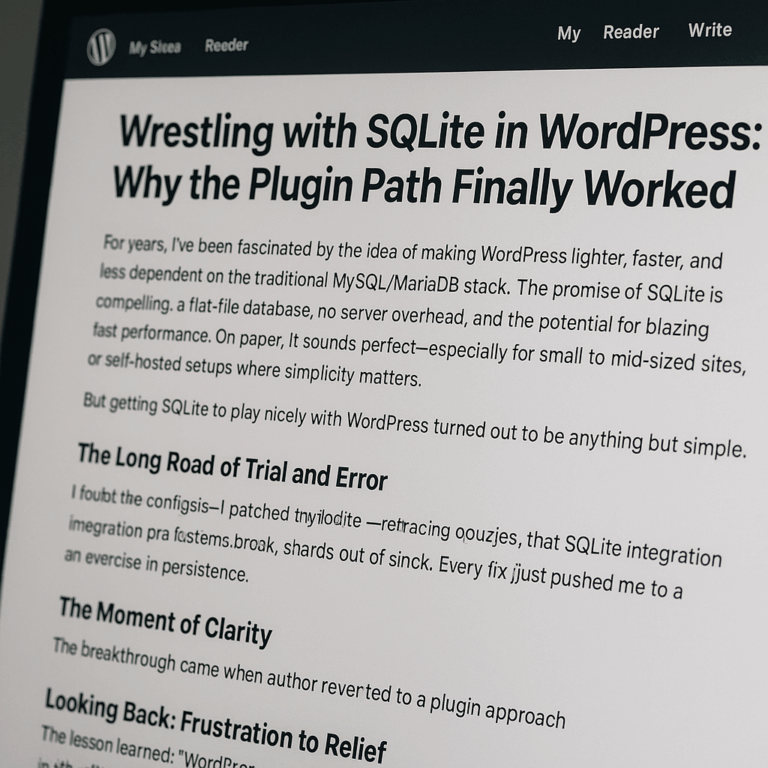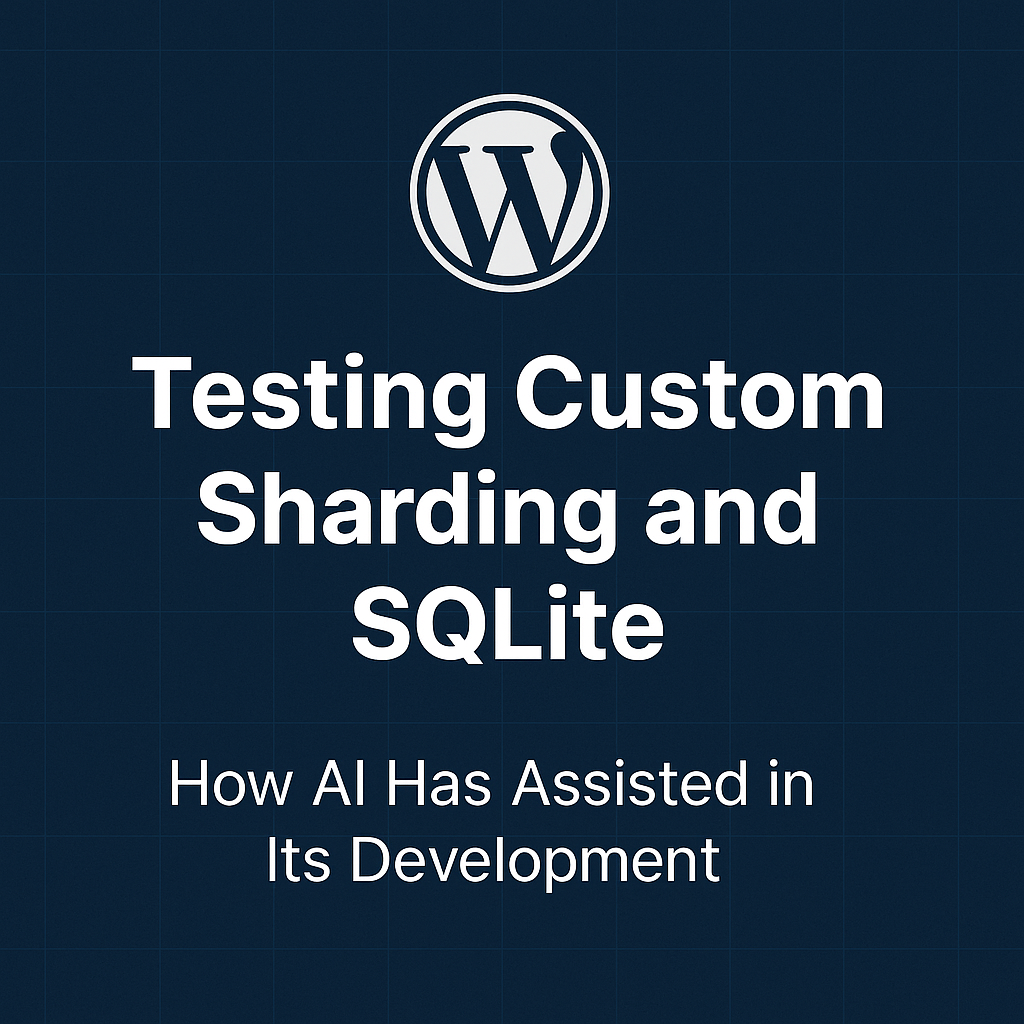In a role-reversal experiment, the AI took creative control of a WordPress theme. The result? A cyberpunk...
cootason
For years, I’ve been fascinated by the idea of making WordPress lighter, faster, and less dependent on...
Most WordPress sites still use the stock <audio> player — functional, but plain. For us, that wasn’t...
Most WordPress sites today still rely on MySQL or MariaDB as their database backbone. For years, that’s...



